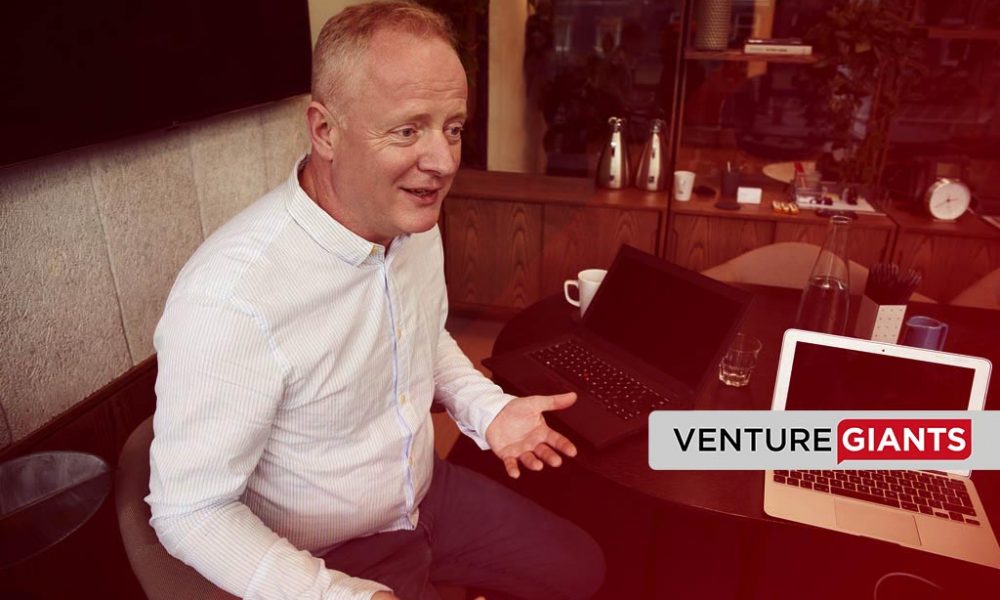The global economy has not been able to inspire much confidence since 2008. Despite the best efforts by governments and businesses alike, the fundamentals in most developed economies continue to drag global economic growth rates to a stagnant level with inflationary pressures are taken into account.
This worldwide economic slowdown has managed to deflate the valuations for start-ups as well as established businesses even if they can demonstrate strong potential for projected growth. This de-valuation period has opened up opportunities for angel investors that are willing to get in early, take a risk, and take advantage of the growth that will follow the recessionary period at present. This investment sentiment: ‘swimming against the tide to get to calmer waters later’ is also shared by world famous investors including Warren Buffet who once infamously stated: “…invest when there is blood on the streets”.
When market and investor confidence is at an all time low, and many high net worth individuals and angel investors vary on investing into innovative start-ups. A liquid and astute investor can quickly realises that this is the time to search out lucrative opportunities and take advantage of very low business valuations. It does require sharp foresight and a considerable appetite for risk on the part of the Angel Investor – but the rewards can justify the risk.
It is a powerful thought, but a single angel investment in the right industry, at the right time, and in the right entrepreneur can change the way the world works, and the way that humans operate within it.
AC Electricity was once a disruptive technology that had to be commercialised to gain investor interest in its early stages. Opportunities were lost but the few investors that saw the long term potential of electricity led on to create two of the world’s largest corporations – General Electric and Westinghouse.
The Second Industrial Revolution
1820 to 1914 saw a remarkable progress in industrial development in the Western World. There are many similarities from this period to the dotcom and technology era that we have witnessed since 99. Prior to 95 there was no Google and you would have most probably been reading this article on a piece of paper – or loading it from a floppy disc. Technology entrepreneurs like Ram Shriram (early stage investor in Google) benefited from this foresight.
Much in the same way, electricity in the Second Industrial Revolution was a relatively unproven concept and to commercialise it required substantial investment and foresight from investors. One of those investors happened to be J. Pierpont Morgan who in 1878 at a Paris exhibition, along with several angel investors, including the members of the Vanderbilt family decided to invest in the vision of Thomas Edison. He was convinced that ‘DC Electricity’ would change the world and be the only real viable solution for providing electricity to business districts.
Though the investment in hindsight is a no-brainer, at the time, electricity generation was highly experimental and would require a huge commitment of investment with no guarantees of success. Edison in 1878 held a patented system of electricity distribution and was successful in raising angel investment.
Using the angel investment he raised Edison launched his first DC electricity generation station four years later in 1882. It was capable of providing DC electricity to 60 customers in Manhattan.
Following the success of this operation and from a mixture of organic growth and second and third rounds of funding, Edison swiftly expanded his foothold in the industry, opening a total of 121 DC electricity power generation stations in the US by 1887.
The barriers to entry were becoming increasingly and it seemed that Edison and his investors were well on their way to creating a monopoly in electricity generation. However, the major caveat of DC electricity that Edison could not find a solution to was that his DC electricity generation stations could only supply electricity over a distance of 1.5 miles.
This restriction meant that no matter how much Edison perfected his generation of electricity, DC could only supply local business districts.
In spite of this massive flaw this was not a major concern to Edison as he knew he could still supply electricity to individual businesses far more economically than it would cost them to produce it by themselves, and as a result it is fair to state that Edison believed that his patented technology could control the entire electricity industry. In fact, he assured J P Morgan of this fact time and time again.
Free markets do not tend to support this notion – think of the music industry as a prime example and the disruptive nature MP3 has been to the industry. Apple is today a shining example of a business that has relentlessly tried to control every aspect of its product and service, from retail to software, mobiles and desktops. It will be interesting if this is the first company in the history of commerce that will be able to control every aspect of its operation.
Enter industrialist and Financier George Westinghouse together with an engineer by the name of Tesla (who was an ex-employee of Edison). Together the duo introduced AC electricity as a viable alternative to Edison’s DC electricity.
It was a disruptive technology as AC electricity could travel much greater distances on much cheaper cable than DC which meant fewer power stations were needed and as the electricity could serve more end users, it was able to supply electricity to individuals for far less than DC electricity.
As a financier of AC electricity, Westinghouse’s vision was to supply the entire country with electricity in a cost efficient method and he knew that DC electricity would not be able to fulfil this vision.
As the creator of AC electricity, Tesla was very much in alignment with this vision, and Westinghouse swiftly bought out Tesla’s patents together a royalty deal on AC electricity and hired him as a consultant. Together they then created AC systems that turned a new chapter in the history of electricity and most of these innovations are still in use today!
It became increasingly clear that AC electricity was the future and AC electricity was endorsed as a cheaper more efficient generation process over DC electricity. J Piermont Morgan and Edison were not keen to allow this to happen because they already held patents in DC electricity and recognising how disruptive AC electricity could be to their business model, Edison waged war against anyone trying to endorse AC electricity.
Edison convinced the public that his technology was better than the competition and even used tactics like employing AC electricity in the electric chair for public executions which would also demonstrate how unsafe AC electricity was.
A parallel to this is the reactionary response of record producers and CD producers towards Napster (the illegal worldwide music sharing site) in 1999. Instead of being innovative and trying to combine and commercialise the technology that was obviously better than the CD in almost every way, they invested a large amount of their cash reserves into trying to shut down these websites and to also prosecute its end users. History has demonstrated time and time again that these tactics do not work.
An ugly competition for market share ensued between J Pierpont Morgan and Westinghouse and since the smear campaign against AC electricity was not really working – Edison and J Pierpont Morgan decided to attack Westinghouse and Tesla directly by spreading rumours that Westinghouse’s finances was in a precarious situation and that it was only a matter of time till the whole venture failed. The tactic worked, and investors starting pulling out their working capital required to continue the research.
At this point, on the verge of bankruptcy, Westinghouse proposed to Tesla that if this technology was to be developed further the contracts that Tesla held would have to be altered drastically – so as to conserve the capital reserves that they held.
Tesla, for his belief in his own technology agreed with Westinghouse and relinquished all of his royalty rights to AC electricity. This selfless act from Tesla was his lasting legacy to the world and a real testament to the belief in his own vision that AC electricity could change the world.
The advantages of AC electricity soon became evident and due to its combination of a low cost business model in tandem with its range, AC generation installations quickly superseded Edison’s DC electricity operation and much of the technology that Tesla created is still employed today.
Edison’s technology is mostly used in mobile phone adaptors and adaptors nowadays.
This leads us neatly on to how much money was actually made by the investors that financed AC Electricity?
The person who should have earned the most was Tesla. Though he sold his patents to Westinghouse earlier on, he still had a generous royalty contract on AC electricity which he surrendered during Edison’s smear campaign.
The royalty agreements between Westinghouse and Tesla stipulated that Tesla as the inventor of AC electricity would receive a royalty of $2.50 for every horsepower outputted – a staggering sum!
The royalties from the AC generators and equipment alone would have been worth approximately £5bn today factoring inflation without even taking into consideration the royalty for $2.50 per horsepower of electricity outputted. It is fair to say that factoring in inflation; Tesla would be one of the wealthiest men in the world thrice over. It is absolutely staggering that a single person could have been entitled to all of this – and that to from one single royalty contract. But, tragically, Tesla passed away in a New York hotel room in 1943, destitute.
Though he may have surrendered all of his rights to the technology – these designs are still the standard that is employed worldwide.
Electricity, today, remains a constantly evolving technology. Its newest variations still continue to attract angel investors. Wind energy, nuclear energy, solar energy, and other newly emerging green clean technologies for energy generation have captured the imagination of several large angel investment firms. So whether you believe the best investment in the world is Google because of the profit that was earned, or electricity because of the change it has made for the world remains a deeply subjective opinion, and also, what type of entrepreneur you are.
I am sure the ‘Sociopreneurs’ (social entrepreneurs) would jump at electricity as the world’s greatest investment and I am sure that alphapreneurs and empire builders would say: google is the best investment in the world!
History has taught us time and time again that an entrepreneur with a business model that is positioned in a monopolistic position over the marketplace will collapse eventually, unless the entrepreneur uses the same vision to remain alert to every single disruptive technology that could supersede their own.
Consumers will always opt for what can be produced cheaper and for what is more convenient. mMy beloved £1,000 audiophile CD player that sits in my attic will tell you likewise, as it wonders where everything went wrong for it. J Piermont Morgan invested in DC electricity but failed to comprehend the superiority of AC electricity even when the opportunity knocked at his own doorstep.
Sometimes, angel investors should diversify their investments – perhaps even in competing technologies when it is unclear which one of them may eventually prosper.
Remaining unemotional always helps and spreading your investments across competing fields and spreading risk has to be a sure strategy for success.




